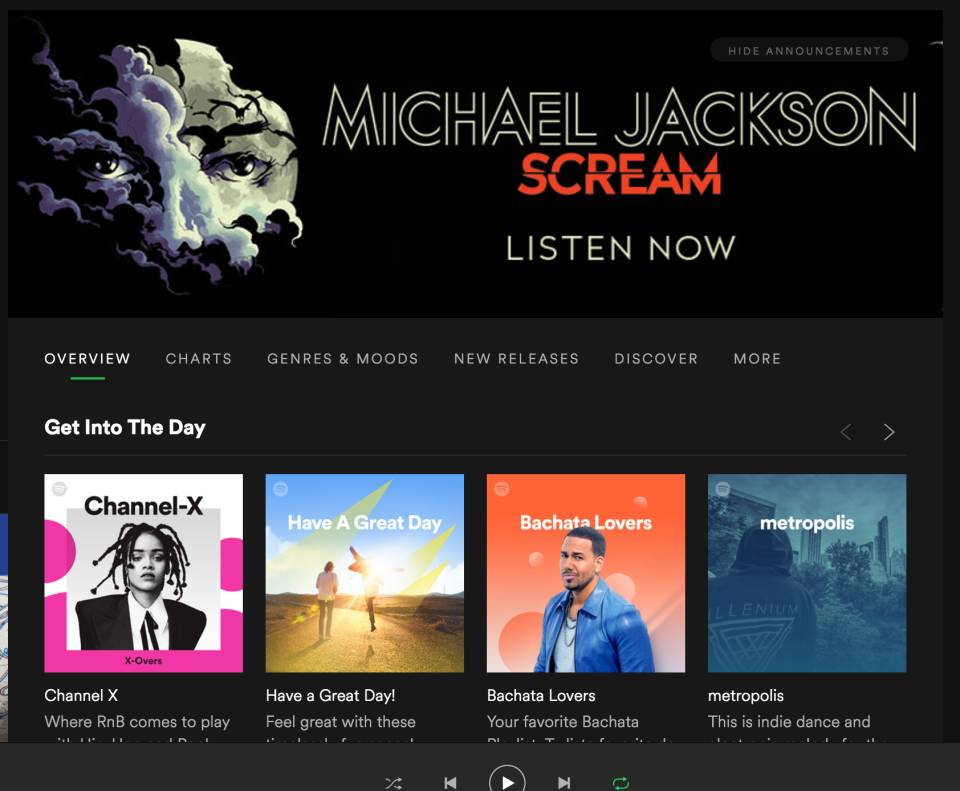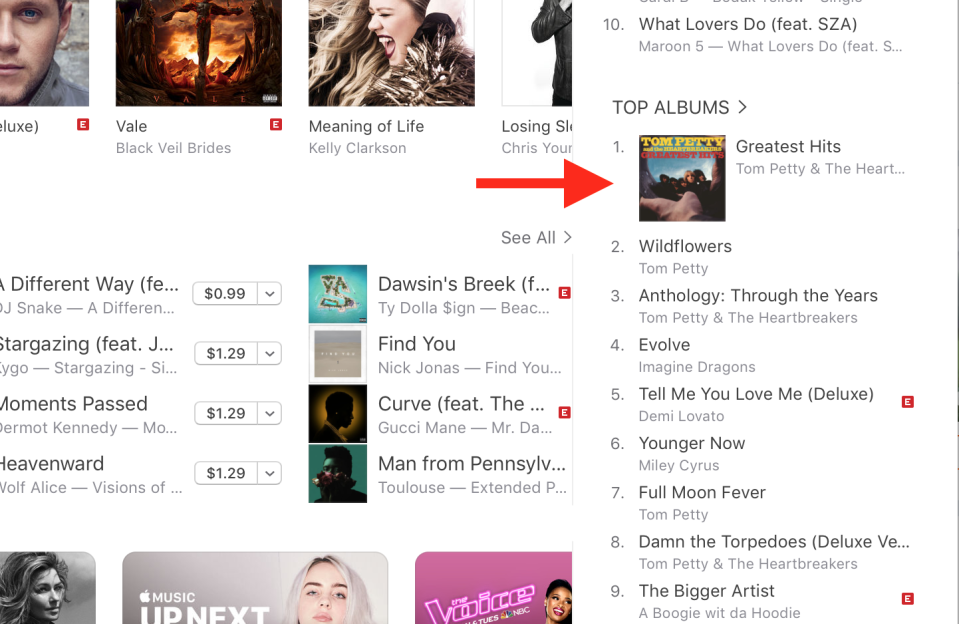Why streaming services should consider artist remembrance pages

Tom Petty died last night, but you would have never known from looking at Apple Music, iTunes, or Spotify. On the home screens of each app, there is something about Miley Cyrus, and various other things that have nothing to do with the biggest music news story of the week.
When a public figure dies, if they’re big enough, publications like New York Times, Washington Post, Wall Street Journal, and Yahoo will send out alerts to millions of mobile device users, loudly ringing the tower bells to let the masses know. Obituaries will be posted, likely pre-written months, years, or even decades in advance, evidenced by contemporary bylines from writers who have long left publications, the industry, or this world entirely. (Hugh Hefner’s obituary, published a week ago, was written by Laura Mansnerus who left the New York Times in 2007.)
Despite the newsworthy nature of figures that capture the nation’s interest, the most popular music and video streaming services rarely participate.
Spotify, for example, is deliberately careful about referencing deaths and rarely even allow news organizations a glimpse into their data. The app, like other music services, at least, gives users the ability to search for user-created and Spotify-made playlists that are public — a massive boon for people looking to dip their toes into an artist whose name is in the headlines. But you have to know where to look. After some poking around, I eventually found a Spotify playlist entitled “This Is: Tom Petty,” after searching for Tom Petty and finding it amongst other matching playlists. The only reference to his death: “Celebrating the life and legacy of the legendary, Tom Petty” was created Tuesday mid-morning.

On Apple’s side, the only inkling of a major death in the industry is on iTunes, where a flurry of buying (do people still buy songs on iTunes?) has carried Tom Petty’s seminal Greatest Hits album to the top of the iTunes chart, and four other albums of the recently deceased into the top 10. You can see this chart if you scroll down and look closely — it’s almost in fine print.
Dozens of other sites will post obituaries, likely pre-written months, years, or even decades in advance, evidenced by contemporary bylines from writers who have long left publications, the industry, or this world entirely. (Hugh Hefner’s obituary, published a week ago, was written by Laura Mansnerus who left the New York Times in 2007.)

On Apple’s side, the only inkling of a major death in the industry is on iTunes, where a flurry of buying (do people still buy songs on iTunes?) has carried Tom Petty’s seminal Greatest Hits album to the top of the iTunes chart, and four other albums of the recently deceased into the top 10. You can see this chart if you scroll down and look closely — it’s almost in fine print.
There is a service lost here by shying away from acknowledging these moments. At the very least, a newsy line on the home page noting the community has lost a titan would suffice.
But there could be so much more in terms of remembrance, celebration, and above all, curation. For the fans, perhaps some rare outtakes? Some BBC sessions? Some gems from off the beaten path in the studio? Perhaps some interviews, some biographical information, a list of influences?
And for the younger generations who missed Tom Petty and the Heartbreakers in 1976 or Damn The Torpedoes in 1979 and only know the handful of cuts that they play on mainstream classic rock stations across the country, how about a curriculum that shows why the Times, Post, and Journal send out a notification?
The same can be said for Netflix and the video services. When Harry Dean Stanton died recently, our streaming apparatus of Amazon, Netflix, and Hulu failed to pull us aside and go, “this dude was a legend, check out these movies you can watch right now that will explain why these older folks are sighing.”
The gaps these services leave are filled somewhat by social media as people quote or post clips of the good stuff, but there’s a missed opportunity here. A digital shrine to fallen vinyl heroes is a good thing.
Update: Spotify has just added the Tom Petty playlist to its “Browse” homepage under “Afternoon Soundtracks”

Ethan Wolff-Mann is a writer at Yahoo Finance. Follow him on Twitter @ewolffmann. Confidential tip line: emann[at]oath[.com].
Read More:
ATM fees have shot up 55% in the past decade
Big bitcoin-friendly companies like Microsoft and Expedia hedge their bet
The real reason Mexico will never pay for the Trump’s wall: It’d be ‘treason’
How Waffle House’s hurricane response team prepares for disaster
Trump weighs slashing one of the most popular tax deductions
A robot lawyer can fight your parking tickets and much more
Consumer watchdog is making it easier for consumers to sue banks
